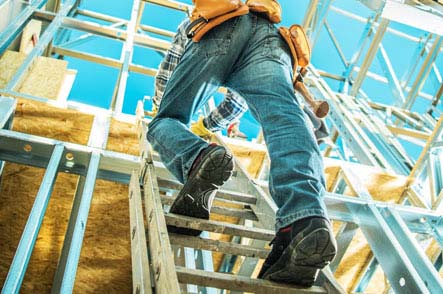Introducing our Safe Work Method Statement for working with ladders – a comprehensive tool to help you and your team stay safe and secure on any project. Here’s what makes it stand out:
Pre-filled and Comprehensive: Our SWMS for working with ladders comes pre-filled with all the necessary details you need to get started on your project right away. It covers all the key aspects of ladder safety, so you don’t have to worry about missing anything crucial.
Fully editable and customisable in Microsoft Word format for easy editing: We understand that every project is unique, which is why our SWMS is fully editable and customisable. You can easily make changes to the document in Microsoft Word format, making it super easy to adapt to your specific needs.
Includes the scope of the project and project details: Our SWMS includes a comprehensive scope of the project and project details, so you can get a clear understanding of what needs to be done.
Includes checklist of any high-risk machinery on site: Our SWMS also includes a checklist of any high-risk machinery on site. This ensures that all machinery is accounted for and that proper safety measures are taken.
Includes space for recording any staff training: We believe that proper training is key to staying safe on the job. Our SWMS includes space for recording any staff training, so you can keep track of who has received the necessary training.
Includes before and after risk ratings: Our SWMS includes before and after risk ratings, allowing you to track the effectiveness of your safety measures and make improvements as needed.
Includes resources for use of legislative references: Our SWMS includes resources for the use of legislative references, making it easy to stay compliant with all relevant laws and regulations.
Includes all PPE required: We’ve made sure to include all the necessary PPE required for working with ladders. This ensures that you and your team are properly protected at all times.
Includes risk assessment and risk assessment matrix: Our SWMS includes a comprehensive risk assessment and risk assessment matrix, helping you to identify potential hazards and take the necessary precautions.
Includes a checklist to ensure all requirements have been covered when implementing the SWMS: Our SWMS includes a checklist to ensure that all requirements have been covered when implementing the SWMS. This ensures that you haven’t missed anything important.
Includes sign-off page for all workers and responsible persons: Our SWMS includes a sign-off page for all workers and responsible persons, ensuring that everyone is on the same page and fully committed to safety.
Easy to use, easy to customise: Our SWMS is designed to be easy to use and easy to customise. It’s user-friendly and can be adapted to your specific needs with ease.
Suitable for large contracts and Tenders, including tier 1 contractual work: Our SWMS is suitable for large contracts and tenders, including tier 1 contractual work. It’s a comprehensive solution that can be used on any project, no matter how big or complex.
Instantly delivered download: We understand that time is of the essence, which is why our SWMS is available as an instantly delivered download. You can get started on your project right away, without any delay.
Overall, our SWMS for working with ladders is the perfect tool to help you stay safe and secure on any project. It’s comprehensive, user-friendly, and fully customisable, making it the ultimate solution for ladder safety.
Here is some safety information related to working with ladders.
![]()






